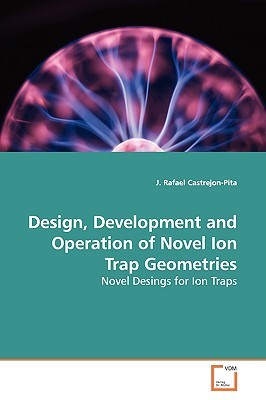
- We will send in 10–14 business days.
- Author: J Rafael Castrejon-Pita
- Publisher: VDM Verlag
- ISBN-10: 363913866X
- ISBN-13: 9783639138665
- Format: 15.2 x 22.9 x 0.8 cm, softcover
- Language: English
- SAVE -10% with code: EXTRA
Design, Development and Operation of Novel Ion Trap Geometries (e-book) (used book) | bookbook.eu
Reviews
Description
This book centres around the discussion of the advantages and disadvantages of various designs of ion traps. The first chapter introduces the topic of ion traps to clarify the local context of this work. In the second chapter the proposal of a novel design for a Penning ion trap is presented. It is shown that this trap, called the wire trap, has many advantages over traditional designs due to its open geometry and scalability. In the third chapter the development of two scalable RF wire traps is presented. Both designs are based on the geometry of the wire trap. In the following chapter, the design, simulation, construction and testing of a wire trap prototype is presented. The fifth chapter presents another novel design for a planar Penning trap. This design, called the two plate trap, shares many advantages of the wire traps, including the scalability. The sixth chapter of this book deals with the design of a cylindrical Penning trap for the storage of highly charged ions. Finally, in the last chapter, a summary of the original contributions of this work is presented.
EXTRA 10 % discount with code: EXTRA
The promotion ends in 16d.14:52:14
The discount code is valid when purchasing from 10 €. Discounts do not stack.
- Author: J Rafael Castrejon-Pita
- Publisher: VDM Verlag
- ISBN-10: 363913866X
- ISBN-13: 9783639138665
- Format: 15.2 x 22.9 x 0.8 cm, softcover
- Language: English English
This book centres around the discussion of the advantages and disadvantages of various designs of ion traps. The first chapter introduces the topic of ion traps to clarify the local context of this work. In the second chapter the proposal of a novel design for a Penning ion trap is presented. It is shown that this trap, called the wire trap, has many advantages over traditional designs due to its open geometry and scalability. In the third chapter the development of two scalable RF wire traps is presented. Both designs are based on the geometry of the wire trap. In the following chapter, the design, simulation, construction and testing of a wire trap prototype is presented. The fifth chapter presents another novel design for a planar Penning trap. This design, called the two plate trap, shares many advantages of the wire traps, including the scalability. The sixth chapter of this book deals with the design of a cylindrical Penning trap for the storage of highly charged ions. Finally, in the last chapter, a summary of the original contributions of this work is presented.


Reviews